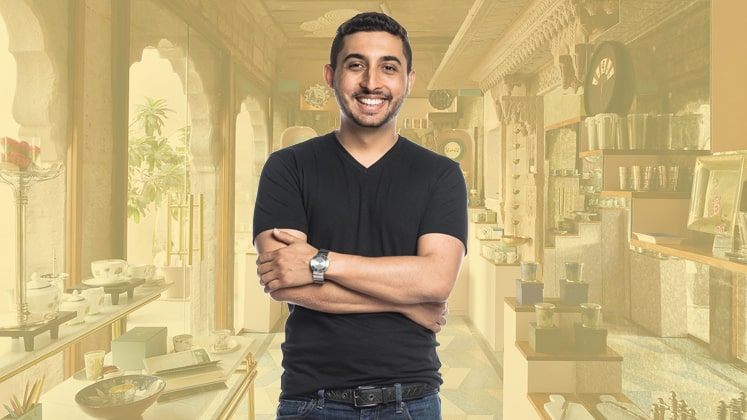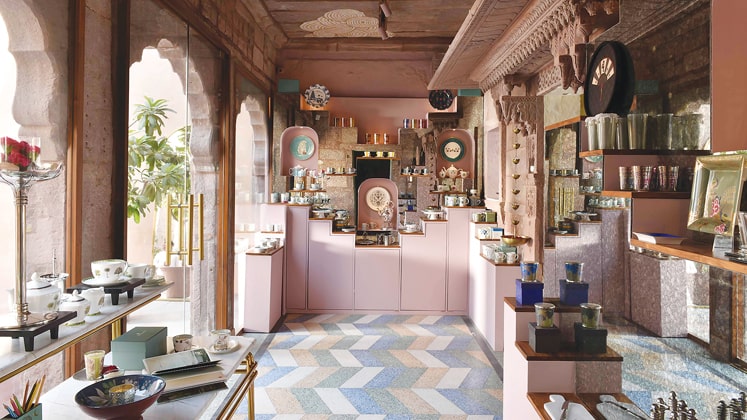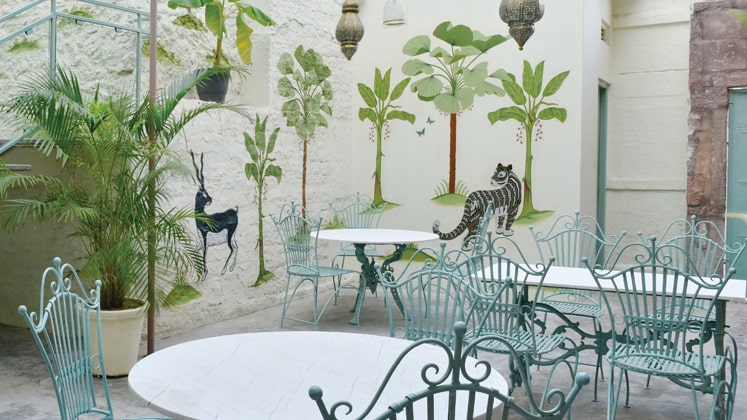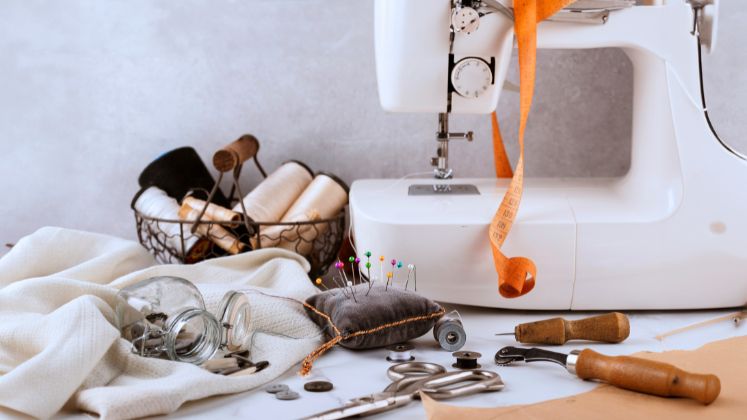
Multidisciplinary space designer and ace architect known for crafting bespoke interiors, furniture, and products, Rooshad Shroff has, in a short span of time, come to be known as one of the leading forces of change in India’s design space.
After receiving his undergraduate degree in Architecture at Cornell University, pursuing his Masters in Architecture at the Graduate School of Design in Harvard University, Rooshad served as a Teaching Assistant to renowned Spanish architect Inaki Abalos.
After living in USA for 10 years and working in London, the space designer started his own practice in Mumbai 7 years ago. His signature lies in using traditional Indian crafts and techniques to re-actualise the handmade.
At Cornell, Rooshad was awarded the Edward Palmer York Memorial Prize for outstanding performance in design, as well as the Michael Rapuano Memorial Distinction in Design Award. His graduating thesis was later exhibited as part of the Emerging Talents, Emerging Technologies Exhibit at the Beijing Architecture Biennial in 2006.
AR discusses what inspires the architect, the projects he enjoys doing the most, his take on the space design market in India and the impact of interactive design today.
AR: How did you get into this space? Have you grown up with a creative bent or was it something that you took fancy to later in life?
RS: I actually come from a family of architects – my dad and my brother are also architects and even my mother used to practice it but put it on the back-burner once my brother and I were born.
I have grown up in a design environment, getting into dad’s office as a kid, accompanying him on his sites and seeing his projects come up, going to museums on holidays; so yes, in some sense, it was ingrained in my DNA and was not something I was forced or told by my parents to get into.
AR: What are the various mediums or design areas that you work with?
RS: Though trained as an architect, ever since I started my own practice, I branched out from architecture into various facets of design including industrial design, interior design, product design, furniture design, visual merchandising, etc. I don’t limit myself to any one particular area.
“We are quite process-driven and there definitely is a big interest in crafts – be it carpentry, inlay, marble carving, marble inlay or leather work.”
AR: How would you describe your signature style?
RS: Since the practice is still fairly young, there is no definite signature. We are quite process-driven and there definitely is a big interest in crafts – whether it be for interiors or furniture, there has always been a deep rooted research surrounding the different crafts of India.
It involves really exposing yourself to technicalities associated with a particular kind of craft and then translating it into a design that would be more relevant and contemporary for today.
I try working with different crafts – be it carpentry, inlay, marble carving, marble inlay or leather work, and that’s something that is constant across the work we do.
AR: What are some of the crafts clusters/regions that you work with?
RS: Depending upon the craft being used, specific regions are tapped post which I go to those places, research on them, and after a couple of months or sometimes maybe even after a year of prototyping, we begin going towards a larger direction.
The marble work happens only in Jaipur, the inlay work happens in Agra, my carpentry work happens in Mumbai for which we have Rajasthani artisans working on it. My embroidery happens only in Mumbai and chikan work is done in Lucknow.
AR: Can you name some of the notable fashion brands and designers that you have worked with?
RS: I have worked with Christian Louboutin on his interiors. I did their store in Mumbai, where I was their local architect, then in New York, following which I also became the design architect for their Bangkok store.
I have been representing Hermes for India since the last 6 years and design their windows for Mumbai and Delhi – which changes four times a year. As far as the design is concerned, I am involved in the core process and ideation of these designs which are based on a theme that is shared by the brand.
Hermes is among the few luxury brands to have different window designers across the world and each of their windows are different. For example, their London window is different from a Paris window, which will then again be different from their Indian window.
I’ve also been working with Indian menswear designer Kunal Rawal since the past year-and-a -half on his stores. We linked up first for his Rhythm House store in Kala Ghoda and have since then, worked on his Delhi and Hyderabad stores.
AR: What are some of the projects that you really enjoy doing?
RS: Retail is something that I really enjoy working on. Each brand comes with its own identity and the trick lies in how we add on to that identity to enhance their retail experience.
I recently finished Sonam Kapoor and Anand Ahuja’s brand Bhane in Bangalore, and will be starting work on their Delhi store. I’ve also worked with Jaipur Modern; Private Collection in Abu Dhabi, Dubai and Doha; Good Earth in Jodhpur; Sonam Kapoor’s Delhi and London apartments; and some realty firms.
AR: What is the process that you try to follow while designing for a particular designer or brand?
RS: We always work to encapsulate the essence of the brand and translate that into a physical space.
In that sense, for example, Kunal has a very strong aesthetic in terms of industrial, military and technological influences – these were the elements we had extracted out of Kunal’s identity and tried to decode that into the language of the store as well.
Throughout all his stores in Mumbai, Delhi and the upcoming one in Hyderabad, we have worked with spaces which become quite flexible and interactive – for example, in the Bombay store – which is spread across two levels, we have motorised display racks which can be moved up and down by pressing a button; or the conveyor belt display rack concept at the Delhi store which was introduced keeping in mind the limited size of the store.
Since there are military influences in his clothes, I also incorporated elements of the Morse code which is a way of communication in the army. I’ve played with the idea of tactile indicators that essentially guide blind people, to depict different messages from the brand such as – ‘Make Your Mother Proud’ or ‘Dress to DStress’ – into a graphic pattern that also serves as a demarcation in the store space for the shoes to be displayed.
AR: The market today is very experience-driven. How do you incorporate that into your spaces?
RS: Kunal’s store is the latest store that we have done and it revolves more around the experience of shopping. The idea behind the motorised display racks is that all the racks would be taken on top once a consumer walks in, and after the team understands what their requirement is, the specific clothes rack would be brought down to them.
It allows for a significantly larger number of clothes to be displayed all at once and a tailored experience is created wherein clothes are brought to the customer, as against them moving around the store going through 500 pieces of garments.
Another example is of when we did Good Earth in Jodhpur – a small haveli space was broken up into different rooms. The initial thought process involved playing with the different senses of smell, sight, sound, taste and touch to match with Good Earth’s wider offering – so each of the 5 senses had a room dedicated to them. For example, the smell room housed their spa products, whilst the sight room was a display of cushions and gaddas on the floor in an auditorium sort of setting which also had a big TV set showing the entire behind the scene footage of the products being made.
I also recently worked on a 12-foot long Flower Table, which was a commissioned piece that I did with a very close designer friend of mine. We sourced different flowers from various international regions and pressed them for a number of months. These were then lacquered over a table to create a meadow-like effect.
AR: What is your take on the industry today? How do you think the space for architecture and space design are poised in the Indian market?
RS: Space design is still a very nascent industry in India. There is definitely a larger appreciation for design, especially in the last 7 years since I’ve been practising. I can see that shift already happening where people are becoming more house-proud and design-sensitive about their surroundings. They want to experiment and invest in their homes – be it because of media, technology or Instagram, people are becoming bolder with their design choices.
AR: Who are some of the architects or space designers who have inspired you?
RS: I was lucky to have had a chance to work with architects who I always looked up to, read their books, studied their works and visited a few projects done by them around the world, which has in turn been quite a considerable influence in my practice. I have worked with OMA/REX in NYC and with Zaha Hadid architects in London.
AR: What would your advice be to aspiring entrepreneurs looking to venture into this field?
RS: Be bold, take risks and try things that you believe in. Push your ideas as much as you can because the thought also needs to be cultivated into actuality which can only happen with a rigorous development of the idea.
Every person has different interests and aesthetics, so there isn’t any one particular platform or entity that people should look out for; they should rather spend time working with various people who inspire them in order to realise and then cultivate their own inherent design language.










